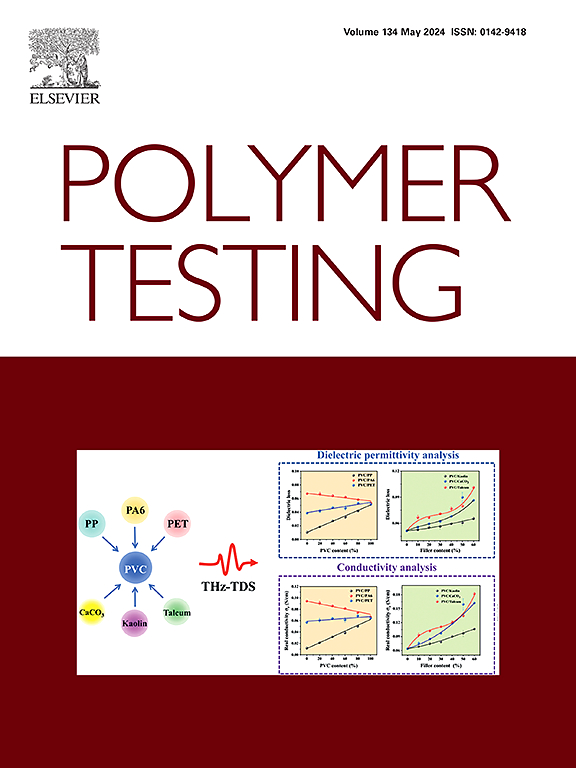在光学范围内用漫反射光谱测定高密度微凝胶的颜色和晶体光子结构
IF 6
2区 材料科学
Q1 MATERIALS SCIENCE, CHARACTERIZATION & TESTING
引用次数: 0
摘要
离子PNIPAM微凝胶在水中表现出局部自组织成不同微观三维光子结构的能力。这些排列的性质取决于浓度、温度、pH值等,使它们成为一个非常有吸引力的系统来模拟晶体结构和设计新的可调谐光子器件。然而,由于这些小晶体仅在随机取向的水悬浮液中稳定,并且它们具有非常低的光学对比度,因此对其光学性质的定量描述变得非常困难。因此,我们提出了一种应用于漫反射光谱的新型物理模型,该模型允许研究最具挑战性的系统,高浓度微凝胶分散体(104-129 mg/mL)的PNIPAM微凝胶与甲基丙烯酸共聚(PNIPAM- maa),也称为玻璃相。事实上,在这个重量浓度范围内,微凝胶几乎是透明的,但由于光子微晶体的存在而具有均匀的颜色。通过提出的方法,可以将光学性质与晶体结构联系起来。因此,我们的研究结果似乎指出,在光子PNIPAM-MAA排列中,两种晶体排列共存:主要是体心立方(BCC)结构和较小比例的面心立方(FCC)结构。本文章由计算机程序翻译,如有差异,请以英文原文为准。
Color and crystal photonic structure in high density microgels determined by spectroscopic diffuse reflectance at the optical range
Ionic PNIPAM microgels in water present the ability to locally self-organize into different microscopic three-dimensional photonic structures. The properties of these arrangements depend on the concentration, temperature, pH, etc, making them a very appealing system to model crystalline structure and design new tuneable photonic devices. However, as these small crystallites are only stable in aqueous suspension in random orientations and they present a very low optical contrast the quantitative description of their optical properties became quite difficult. Herewith, we propose a novel physical model applied to diffuse reflectance spectra, which allows studying the most challenging system, the high-concentrated microgel dispersions (104–129 mg/mL) of PNIPAM microgels copolymerized with methacrylic acid (PNIPAM-MAA), also known as glassy phase. In fact, at this range of weight concentration, microgels are nearly transparent but with uniform colors originated by the presence of photonic microcrystals. By the proposed methodology, it has made possible to correlate the optical properties with the crystallographic structure. Consequently, our results seem to point out that, in the concentrated regime, two crystalline arrangements coexist in the photonic PNIPAM-MAA arrangements: a dominant Body-Centered Cubic (BCC) structure with a smaller fraction of Face-Centered Cubic (FCC).
求助全文
通过发布文献求助,成功后即可免费获取论文全文。
去求助
来源期刊

Polymer Testing
工程技术-材料科学:表征与测试
CiteScore
10.70
自引率
5.90%
发文量
328
审稿时长
44 days
期刊介绍:
Polymer Testing focuses on the testing, analysis and characterization of polymer materials, including both synthetic and natural or biobased polymers. Novel testing methods and the testing of novel polymeric materials in bulk, solution and dispersion is covered. In addition, we welcome the submission of the testing of polymeric materials for a wide range of applications and industrial products as well as nanoscale characterization.
The scope includes but is not limited to the following main topics:
Novel testing methods and Chemical analysis
• mechanical, thermal, electrical, chemical, imaging, spectroscopy, scattering and rheology
Physical properties and behaviour of novel polymer systems
• nanoscale properties, morphology, transport properties
Degradation and recycling of polymeric materials when combined with novel testing or characterization methods
• degradation, biodegradation, ageing and fire retardancy
Modelling and Simulation work will be only considered when it is linked to new or previously published experimental results.
 求助内容:
求助内容: 应助结果提醒方式:
应助结果提醒方式:


